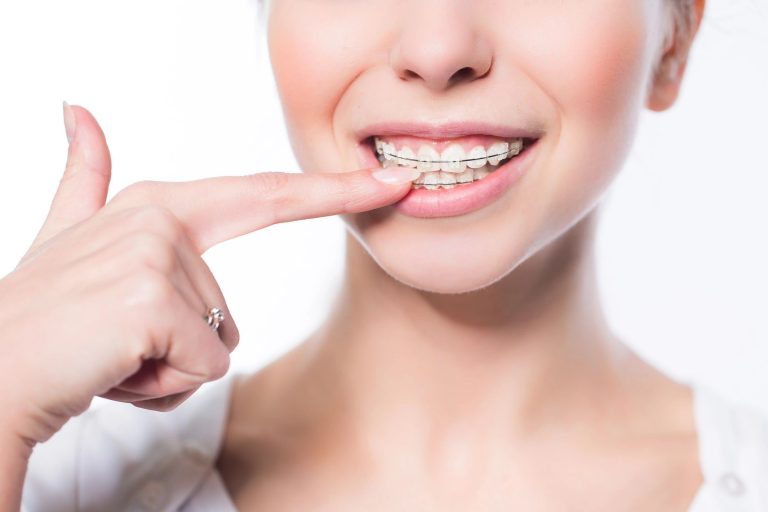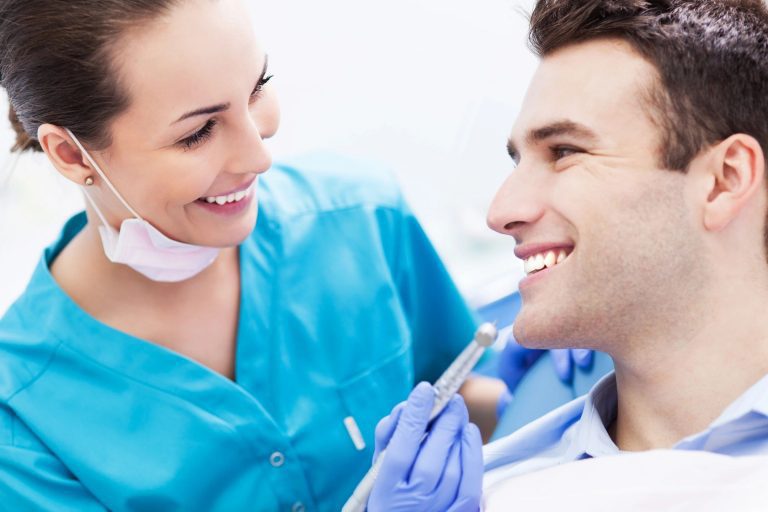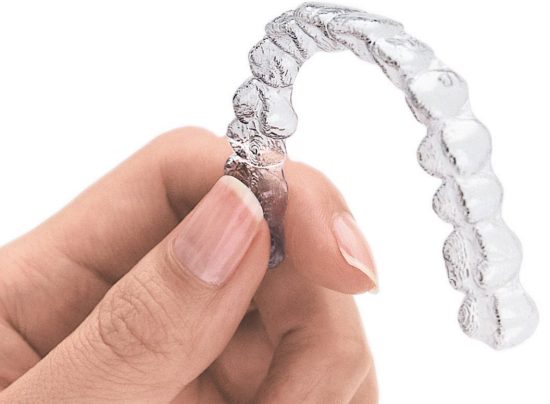Braces in Denton & Krum, TX - What You Need to Know




Life With Braces
What Can You Eat With Braces?
Firstly, let’s talk about what you shouldn’t eat! For the first day or so, stick to soft foods. Avoid tough meats, hard breads, and raw vegetables. Before long, you’ll be able to bite a cucumber again. But you’ll need to protect your orthodontic appliances when you eat for as long as you’re wearing braces.
Foods to Avoid
- Chewy foods: bagels, hard rolls, licorice
- Crunchy foods: popcorn, ice, chips
- Sticky foods: caramels, gum
- Hard foods: nuts, candy
- Foods you have to bite into: corn on the cob, apples, carrots
- Chewing on hard things (for example, pens, pencils or fingernails) can damage the braces. Damaged braces will cause treatment to take longer.
Do Braces Hurt?
When you get your braces on, you may feel general soreness in your mouth and teeth may be tender to biting pressures for three to five days. If the tenderness is severe, take aspirin or whatever you normally take for headache or similar pain. The lips, cheeks, and tongue may also become irritated for one to two weeks as they toughen and become accustomed to the surface of the braces. You can put wax on the braces to lessen this. We’ll show you how! Tissue irritation can also be relieved by rinsing your mouth with a warm salt water mouthwash. Dissolve one teaspoonful of salt in 8 ounces of warm water and rinse your mouth vigorously.
Why Do My Teeth Feel Loose With Braces?
This is to be expected throughout treatment. Don’t worry! It’s normal. Teeth must loosen first so they can be moved. The teeth will again become rigidly fixed in their new – corrected – positions.
What Happens if I Have a Loose Wire or Band?
Don’t be alarmed if a wire or band comes loose. This happens occasionally. If a wire protrudes and is irritating, use a blunt instrument (the back of a spoon or the eraser end of a pencil) and carefully, gently push the irritating wire under the archwire. Simply get it out of the way. If irritation to the lips or mouth continues, place wax or wet cotton on the wire to reduce the annoyance. Call our office as soon as possible for an appointment to check and repair the appliances. If any piece comes off, save it and bring it with you to the office.
Caring for Your Braces Appliances
To successfully complete the treatment plan, the patient must work together with the orthodontist. The teeth and jaws can only move toward their corrected positions if the patient consistently wears the rubber bands or other appliances as prescribed. Damaged appliances lengthen the treatment time.
How Do I Brush With Braces?
It’s more important than ever to brush and floss regularly when you have braces so the teeth and gums are healthy after orthodontic treatment. Patients who do not keep their teeth clean may require more frequent visits to the dentist for a professional cleaning. Adults who have a history of gum disease should also see a periodontist during orthodontic treatment. Click here for a list of recommended products to help with your home care.
Do I Need a Sports Mouthguard With Braces?
If you play sports, it’s important that you consult us for special precautions. We will provide a complimentary mouthguard, or you can order one online or pick one up at your local athletic store. A protective mouthguard is advised for playing contact sports. In case of any accident involving the face, check your mouth and the appliances immediately. If teeth are loosened or the appliances are damaged, phone at once for an appointment. In the meantime, treat your discomfort as you would treat any general soreness.
More questions about braces? Visit our FAQ page here.
Types of Braces
Traditional Metal Braces
Traditional metal braces are the most common type of braces and are more comfortable today than ever before. Made of high-grade stainless steel, metal braces straighten your teeth using metal brackets and archwires. With metal braces, you have the option of adding colored elastics (rubber bands) for a more unique and colorful smile. Learn about metal braces here.
Ceramic Braces
Ceramic braces are made of clear materials and are therefore less visible on your teeth than metal braces. For this reason, ceramic braces are used mainly on older teenagers and adult patients who have cosmetic concerns. While they are visually less prominent, they do require more attention to oral hygiene as ceramic braces are larger and are more brittle than their metal counterparts. For these reasons, ceramic braces tend to be used more on upper front teeth than on lower. Learn more about ceramic braces here.
“Invisible” Braces
Clear appliances (such as Invisalign®) use a series of invisible, removable, and comfortable aligners to straighten your teeth. And, no one can tell you are wearing those aligners because they are invisible! Not only are the aligners invisible, they are removable, so you can eat and drink what you want while in treatment, plus brushing and flossing are less of a hassle. The aligners are comfortable and have no metal to cause mouth abrasions during treatment.
Types of Appliances
Elastics (rubber bands)
Wearing elastics (or rubber bands) with your braces improves the fit of your upper and lower teeth. Wear your rubber bands as instructed – remember that the rubber bands work far more efficiently if they’re worn as prescribed.
Palatal Expander
The palatal expander “expands” (or widens) your upper jaw by putting gentle pressure on your upper molars each time an adjustment is made. Your orthodontist will instruct you about when and how to adjust your expander. When you achieve the desired expansion, you will wear the appliance for several months to solidify the expansion and to prevent regression.
Retainers
Retainers may be removable or fixed. They hold your teeth in their new, correct positions after your teeth have been straightened. Your orthodontist will instruct you on how to care for your retainer and about the duration of the wear. Wearing your retainer as directed is crucial to prevent regression of your treatment.
Separators or Spacers
Separators are little rubber doughnuts that may be placed between your teeth to push them apart so that orthodontic bands may be placed during your next appointment. The separators will be removed before we place the bands. Separators do not mix well with sticky foods, toothpicks, or floss.
Carriere® Distalizer™ Appliance
The Carriere Distalizer is an orthodontic device developed to correct a bite without removing permanent teeth when teeth have erupted incorrectly. With an effect similar to headgear, but without the use of a bulky appliance, the Carriere Distalizer pushes upper teeth back to create a corrected bite prior to the addition of braces. How does the Carriere Distalizer work?
- First, your orthodontist will create an anchor point, most commonly with a lower Essex Appliance, a passive lingual arch, full mandibular fixed appliance, or mini-screws. A Carriere Distalizer arm is then attached to the upper teeth on both sides of your mouth.
- An elastic band is attached from the upper bar to the lower back molars and should be worn at all times except when eating.
- With good elastic wear, your bite can be corrected in a matter of months, depending on the severity of your case.
- When the Carriere Distalizer arms are removed, we will place the remaining braces to finish correcting your bite and aligning your teeth to the perfectly straight, ideal smile you’ve always wanted.
Brushing and Flossing With Braces
Brushing
- Step 1 Using a wet brush with a small amount of toothpaste place bristles where gums and teeth meet.
- Step 2 For 10 seconds on each tooth use circular, vibrating motions around the gum lines.
- Step 3 Every tooth of both arches should be brushed slowly.
- Step 4 Brush the lower teeth from gum line up and the upper teeth from the gum line down. Brush the roof of your mouth and your tongue too!
Flossing
- Step 1 Carefully thread unwaxed floss between braces and wire. You may find a floss threader or floss pick helpful.
- Step 2 Carefully floss around the braces.
- Step 3 Carefully floss around the gum areas.
- Step 4 Carefully floss around each tooth.
Palatal Expander
- Step 1 In a well lit area tip the patient’s head back.
- Step 2 Place the key in the hole until it is firmly in place.
- Step 3 Pushing the key towards the back of the mouth, you will notice the screw will rotate and the new hole will appear. The rotation stops when the key meets the back of the expander.
- Step 4 By pushing back and down towards the tongue, remove the key. The next hole for insertion of the key should now be visible.
- Step 5 Be sure to keep the expander clean by brushing thoroughly when you usually are brushing your teeth.
Braces Diagram
Elastic Tie
Small rubber band that is hooked between different points on the appliance to provide pressure to move the teeth.
Loop in Archwire
Sometimes used for closing space left by an extraction. Most archwires don’t have a loop.
Archwire
The main wire that acts as a track to guide the teeth along. It’s changed periodically throughout treatment, as teeth move to their new positions.
Bracket
Small attachment that holds the archwire in place. Most often, a bracket is cemented directly onto the tooth’s surface, eliminating the need for a band.
Headgear Tube
Round, hollow attachment on the back bands. The inner bow of the headgear fits into it.
Coil Spring
Fits between brackets and over archwire to open space between teeth.
Tie Wire
Fine wire that is twisted around the bracket to hold the archwire in place.
Band
A thin ring of metal fitted around a tooth and cemented in place. The band provides a way to attach the brackets to the tooth.
Hook
Welded or removable arm to which elastics (rubber bands) are attached.
Elastic (Rubber Band)
Small rubber band that is hooked between different points on the appliance to provide pressure to move the teeth.
Retainer Instructions
- Wear your retainers every night, unless instructed otherwise.
- Take your retainers out when eating…and always put retainers in their case! (Most appliances are lost in school lunchrooms or restaurants.)
- Clean retainers thoroughly once a day with a toothbrush and a non-abrasive cleaner (like dish-soap or RetainerBrite). Use warm but not hot water. Brushing retainers removes the plaque, and eliminates odors. Efferdent® or other orthodontic appliance cleaners can be used, but do not take the place of brushing.
- When retainers are not in your mouth they should ALWAYS be in a retainer case. Pets love to chew on them!
- Initially, you may find it difficult to speak. Practice speaking, reading, or singing out loud to get used to them faster.
- Retainers are breakable, so treat them with care. If retainers are lost or broken, call us immediately.
- If you have any questions or concerns about your retainers, or your retainers need adjusting, call us. Do not try to adjust them yourself.
- Always bring your retainers to your appointments.
- Retainer replacement is expensive…with proper care they will last for years!
- Remove retainers when swimming.
- Keep retainers away from hot water, hot car dashboards, pockets, the washing machine, and napkins.
Invisalign®

Dr. Cramer is a Certified Invisalign® Provider
Consider Invisalign to get the beautiful straight teeth you’ve always wanted — without braces. A complimentary consultation with Dr. Cramer can determine if Invisalign is right for you.
What is Invisalign®?
Invisalign uses a series of invisible, removable, and comfortable aligners that no one can tell you’re wearing. So, you can smile more during treatment as well as after. Invisalign is made with 3-D computer imaging technology and has been proven effective. More than 70% of orthodontists in the US and Canada are certified to treat with Invisalign.
Why would I want it?
Not only are the aligners invisible, they are removable, so you can eat and drink what you want while in treatment. Plus, brushing and flossing are no problem. They are also comfortable, with no metal to cause mouth abrasions during treatment. And no metal and wires usually means you spend less time in your doctor’s office getting adjustments. Invisalign also allows you to view your own virtual treatment plan when you start so you can see how your straight teeth will look when your treatment is complete.
How does Invisalign® work?
You wear each set of aligners for about 2 weeks, removing them only to eat, drink, brush, and floss. As you replace each aligner with the next in the series, your teeth will move — little by little, week by week — until they have straightened to the final position Dr. Cramer has prescribed. You’ll visit Dr. Cramer about once every few weeks to ensure that your treatment is progressing as planned. Total treatment time averages 9-15 months and the average number of aligners worn during treatment is between 14 and 30, but both will vary from case to case.
Learn more by visiting our Invisalign® FAQ page or by visiting Invisalign®’s website at www.invisalign.com.

Surgical Orthodontics
What is surgical orthodontics?
Just as orthodontics repositions teeth, surgical orthodontics (also known as orthognathic surgery) corrects jaw irregularities to improve the patient’s ability to chew, speak, and breathe and for improved facial appearances. In other words, surgical orthodontics straightens your jaw. Moving the jaws also moves the teeth, so braces are always performed in conjunction with jaw correction. This helps make sure teeth are in their proper positions after surgery.
Who needs surgical orthodontics?
Your orthodontist will consider surgical orthodontic treatment for non-growing adult patients with improper bites and those with facial aesthetic concerns. Jaw growth is usually completed by age 16 for girls and 18 for boys. All growth must be completed before jaw surgery can be performed. However the pre-surgical tooth movements can begin one to two years prior to these ages.
How does it work?
During your orthodontic treatment, which usually lasts 18-24 months, you wear braces and will visit your orthodontist for scheduled adjustments to your braces. As your teeth move with the braces, you may think that your bite is getting worse rather than better. However, when your jaws are placed into proper alignment during orthognathic surgery, the teeth will then fit into their proper positions.
Surgery is performed in the hospital with an oral surgeon, and can take several hours, depending on the amount and type of surgery needed. In lower jaw surgery, the jawbone behind the teeth is separated and the tooth-bearing portion is moved forward or backward, as needed. In upper jaw surgery, the jaw can be repositioned forward or backward, or the jaw can be raised or lowered. Certain movements may require the jaws to be separated, with bone added/removed to achieve the proper alignment and stability. Other facial bones that contribute to alignment may also be repositioned or augmented.
When you have completed surgery, you should be able to return to school or work within two weeks. After the necessary healing time (about 4-8 weeks), your orthodontist “fine-tunes” your bite. In most cases, braces are removed within 6 to 12 months following surgery. After your braces are removed, you will wear a retainer to maintain your beautiful new smile.